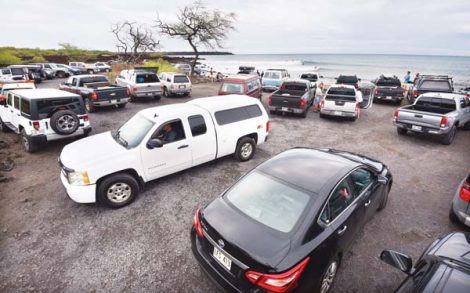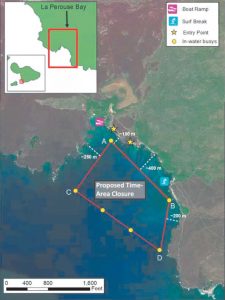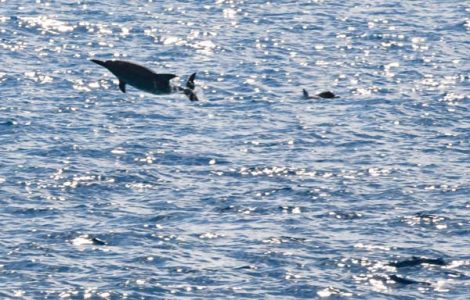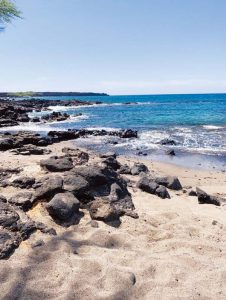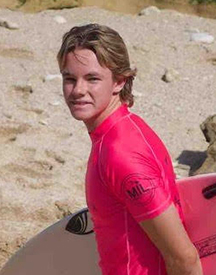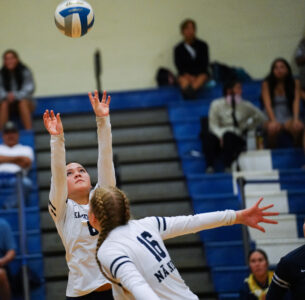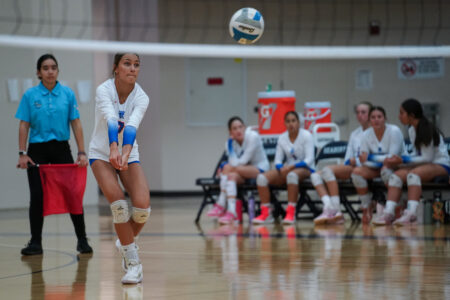Proposed rule would close portion of La Perouse Bay
Dolphin conservation rule would prohibit entry, use of water from 6 a.m. to 3 p.m.
A new proposed rule that would close large portions of five bays in Hawaii, including La Perouse Bay, is getting pushback from local residents who called the actions premature and extreme.
Identified by the National Oceanic and Atmospheric Administration as an important resting habitat for Hawaiian spinner dolphins, La Perouse Bay, or Keone’o’io Bay, as well as Kealakekua Bay, Honaunau Bay, Kauhako Bay (Ho’okena) and Makako Bay on Hawaii island were selected for proposed mandatory time-area closure rules.
“You know how many people use La Perouse Bay and now you want to take a drastic measure of shutting it down?” said local fisherman Pat Borge, who also has owned and operated Makena Stables since 1983. “I manage the gate for local fishermen to go out there and fish. You’re talking about hundreds and hundreds of local guys that go out there and fish. That’s all they want to do. . . . Now I cannot fish because of the dolphins?”
Borge said it’s the community’s right to access the ocean. He said more of the emphasis should be placed on managing tourists and tour operators who interact with dolphins.
“Your job was to enforce the rules already in the books,” he added. “This is a sham.”
The proposed rule by the National Marine Fisheries Service would regulate and prohibit entry and use of the water during “essential daytime habitat use” from 6 a.m. to 3 p.m. daily, said Kevin Brindock, assistant administrator for NOAA Fisheries’s Pacific Island Regional Office.
This includes the prohibition of all forms of access to the closed areas, like swimming with and approaching spinner dolphins; operating a manned or unmanned motorized, nonmotorized, self-propelled, human-powered or submersible vessel; and swimming at the water’s surface or underwater, like SCUBA or free diving.
Although unauthorized take of marine mammals, including harassment of spinner dolphins, continues to be prohibited under the Marine Mammal Protection Act, Brindock said that these regulations are expected to “reduce direct close encounters and disruptions between spinner dolphins” and the “intensity of activities” within their habitats during key resting periods.
“Disturbance at these essential daytime habitats places them at risk,” Brindock said on Wednesday night during a virtual public hearing. “It can be either habitat displacement, temporary avoidance of these essential daytime habitats, it can increase energetic demands as well as behavioral patterns can be disrupted during resting periods. It can lead to reduction in population sizes as well.”
A population of about 355 Hawaiian spinner dolphins frequent Oahu, Maui, Molokai and Lanai. Small-island populations are “more sensitive or are more vulnerable to stressors,” he said.
Those five particular bays were chosen because NOAA studies and surveys showed increasing levels of human activities, and therefore increasing negative health effects on dolphins, he added.
There are six proposed exceptions for accessing the time-area closure, such as activities authorized through a permit or authorization issued by NOAA Fisheries; federal, state or local government vessels or personnel performing official duties; and outrigger canoes used for traditional subsistence fishing intended for personal, family or community consumption or traditional use.
Enforcement and punishment to deter violations will be discussed in further detail “as we move forward with the rule-making process,” said Brindock.
Officials are also considering monitoring the area to enforce the rules.
While all testifiers supported conservation efforts of dolphins, more than half of the 50 people who spoke during the public hearing on Wednesday night, which included nonprofit representatives, citizen scientists and avid ocean users, did not support the full area-closure of the five bays.
Born and raised on Maui, Mike Borge said he grew up fishing and diving at La Perouse and now is teaching his kids to do the same.
“In all my time in this bay, we have not approached or harassed any of these dolphins, nor have I seen kayak fishermen, surfers or free divers doing anything of that such nature,” he said. “This is totally unfair.”
A map provided by NOAA shows the time-area closure boundary starting between 100 to 400 meters (328 to 1,312 feet) off the shoreline at the bay, which is located south of Wailea at the end of Makena Alanui Road.
There will be about six in-water buoys to mark the boundaries.
According to the documents, the boundaries were slightly modified since 2016 to accommodate access by canoe groups, fishers and other water users to areas adjacent to the time-area closure areas.
This proposed rule follows the NOAA Fisheries’ recent law that went into effect on Oct. 28 that prohibits swimming with and approaching spinner dolphins within 50 yards or remaining within 50 yards of a Hawaiian spinner dolphin.
In conjunction with the proposed time-area closure, Brindock said that this would allow the dolphins to “enter the bay undisturbed” and stay throughout the main portion of their daytime rest period while also allowing for other human uses to occur — at a distance greater than 50 yards.
Still, Maui and Hawaii island residents argued that the new approach law has not had enough time to be carried out and that no conclusive evidence has been provided to suggest that full closures were needed.
Looking for less drastic measures, testifiers suggested officials offer more educational programs and conduct outreach.
“This rule is very premature and obviously you guys didn’t do your homework, you guys didn’t come to the community and we didn’t have a say in it,” Maui’s Justin Kekiwi said. “We need to go with education. . . . Let’s use that (approach) rule and see where that goes. If enforced properly with education, it will work.”
Maui resident Russell Sparks, a state aquatic biologist who spoke as a private citizen, said he supports the approach rule but is opposed to the time-area closure at La Perouse Bay because it’s already next to a marine protected area reserve.
“This is one of the few places in this area where fishermen can go spearfishing, where people can enjoy the area. There’s a surf break that is well within your proposed closed area, so many people who are not part of the problem will be affected,” Sparks said. “That’s not good. That’s going to percolate down to what our department does that manages resources.”
Considered a windy bay, the buoys used to mark the boundary may break free and will pose “a significant threat” to coral reefs in the area, too, he added.
The department is accepting public comment through Dec. 27 at go.usa.gov/xew5q.
To view the full proposal, visit www.federalregister.gov/d/2021-20620.
* Dakota Grossman can be reached at dgrossman@mauinews.com.
- With high surf breaking at La Perouse Bay, or Keone‘o‘io Bay, the parking lot at the end of Makena Road is jammed with vehicles in August of 2018. The Maui News / MATTHEW THAYER photo
- The map shows the boundaries for the proposed time-area closure at La Perouse Bay, which will be marked via in-water buoys. NOAA Fisheries
- A pod of spinner dolphins cavorts in the waters of La Perouse Bay, or Keone‘o‘io Bay, in 2018. The Maui News / MATTHEW THAYER photo
- A proposed rule that would implement mandatory time-area closures at La Perouse Bay, or Keone‘o‘io Bay, received public pushback last week. Lily Gavagan photo

